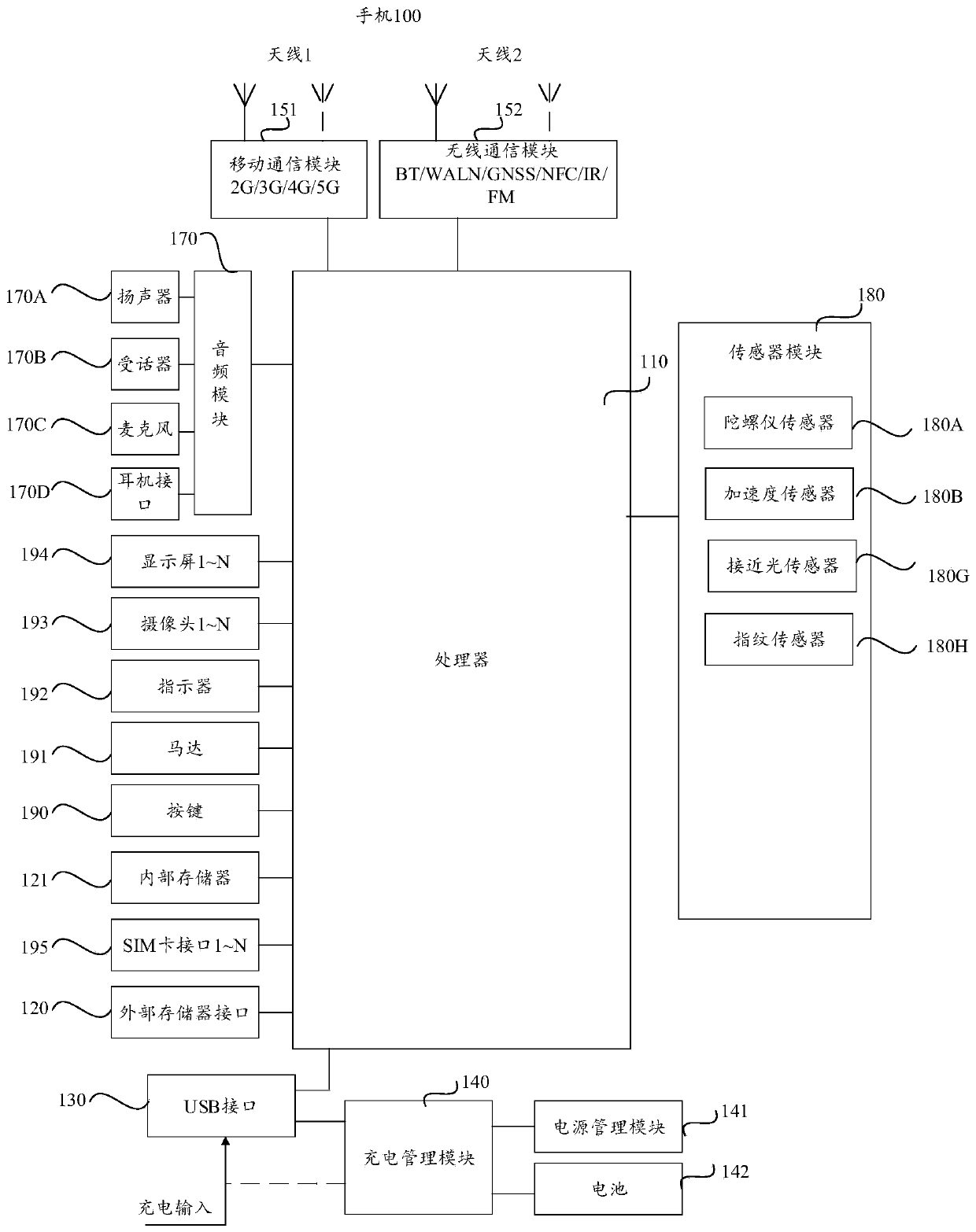Method for controlling state of light sensor and electronic equipment
A technology of optical sensors and electronic equipment, which is applied to equipment with sensors, program control, branch equipment, etc., can solve problems such as screen flickering, achieve the effect of ensuring the signal-to-noise ratio, solving the flickering of the display area, and improving the display effect
- Summary
- Abstract
- Description
- Claims
- Application Information
AI Technical Summary
Problems solved by technology
Method used
Image
Examples
Embodiment approach 1
[0069] The mobile phone can monitor the control signal or pulse width modulation signal of the driver IC of the display 194. When the processor of the mobile phone detects that the control signal or the pulse width modulation signal is switched to a low level, it indicates that the light emitter near the light sensor emits infrared light. signal; when the processor of the mobile phone detects that the control signal or the pulse width modulation signal is switched to a high level, it instructs the light emitter close to the light sensor not to emit an infrared light signal.
[0070] For example, for figure 1 For the square wave of the control signal shown, when the mobile phone detects that the square wave is at a low level, it indicates that the light emitter of the proximity light sensor emits an infrared light signal; when the mobile phone detects that the square wave is at a high level, it indicates that the proximity light sensor is Optical transmitters do not emit infrar...
Embodiment approach 2
[0072] The visible light sensor can be set adjacent to the proximity light sensor. When the pixels in the display area of the OLED display corresponding to the visible light sensor emit light, the visible light sensor can detect visible light, that is, monitor the display time period in the refresh cycle of the screen, and then indicate the proximity The light emitter of the light sensor does not emit an infrared light signal. When the pixels in the display area of the OLED display corresponding to the visible light sensor do not emit light, the visible light sensor cannot detect visible light, that is, the non-light-emitting time period within the refresh cycle of the screen is detected, and then the light emitter close to the light sensor is instructed to start emitting infrared light light signal.
Embodiment approach 3
[0074] The mobile phone can monitor the display synchronous signal of the driver IC of the display 194. When the processor detects the display synchronous signal, it means that the display screen has just finished refreshing a frame of pictures, so the processor determines the non-light-emitting time period in the next image refresh cycle. and display a time period, indicating that the light emitter close to the light sensor emits a light signal only during the non-light-emitting time period.
[0075] It should be noted that the display screen of the mobile phone will only use PWM dimming when the brightness of the display screen is less than or equal to the set brightness value. If the brightness of the display screen is greater than the set brightness value, PWM dimming will not be used. Instead, DC dimming is used. Therefore, the embodiment of the present application is divided into the following two scenarios for description.
[0076] scene one
[0077] When the processo...
PUM
 Login to View More
Login to View More Abstract
Description
Claims
Application Information
 Login to View More
Login to View More - R&D
- Intellectual Property
- Life Sciences
- Materials
- Tech Scout
- Unparalleled Data Quality
- Higher Quality Content
- 60% Fewer Hallucinations
Browse by: Latest US Patents, China's latest patents, Technical Efficacy Thesaurus, Application Domain, Technology Topic, Popular Technical Reports.
© 2025 PatSnap. All rights reserved.Legal|Privacy policy|Modern Slavery Act Transparency Statement|Sitemap|About US| Contact US: help@patsnap.com



